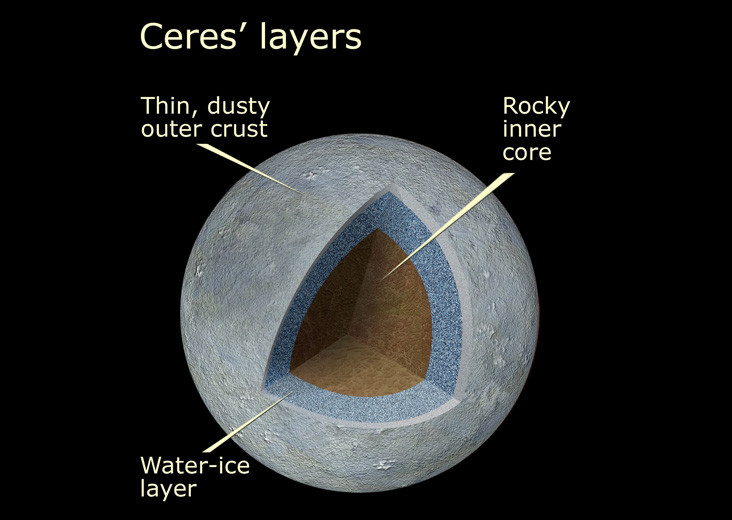Water in Form of Vapour and Ice Discovered on Dwarf Planet Ceres

Astronomers at European Space Agency (ESA) have found evidence of water on the dwarf planet Ceres.
Scientists detected the presence of water on Ceres by using ESA's Herschel Space Observatory, which identified plumes of water vapour rising from two locations on the planet's surface.
Water is present in the form of vapour, which scientists say may have originated from ice-geysers on its surface.
"The water evaporation could be due to comet-like sublimation or to cryo-volcanism, in which volcanoes erupt volatiles such as water instead of molten rocks," scientists noted in their study published in the journal Nature.
Ceres, the largest asteroid in the solar system, is the smallest amongst the first five identified dwarf planets, including Pluto, Eris, Makemake and Haumea.
According to Nasa, Ceres was theorised to contain large amounts of pure water ice beneath its surface until now. The latest study suggests that the dwarf planet indeed has an icy surface.
"This is the first time water vapor has been unequivocally detected on Ceres or any other object in the asteroid belt and provides proof that Ceres has an icy surface and an atmosphere," lead author of the paper, Michael Küppers of ESA in Spain, said.
The vapour is shot up at irregular intervals from Ceres and sometimes is not seen for months.
"When Ceres swings through the part of its orbit that is closer to the sun, a portion of its icy surface becomes warm enough to cause water vapor to escape in plumes at a rate of about 6 kilograms (13 pounds) per second. When Ceres is in the colder part of its orbit, no water escapes," Nasa said in a statement.

Ceres has most of the rocky and terrestrial features in common with Earth and Mars. For instance, just like Earth, Ceres also has Ceres has a differentiated interior that consists of denser material at the core and lighter minerals near the surface.
Scientists believe Ceres is composed of 25% of water in the form of ice mantle in its interior and if melted, the icy layer would amount to more fresh water than that on Earth.
Findings of the study will be further investigated when Nasa's Dawn mission's spacecraft arrives at Ceres.
© Copyright IBTimes 2025. All rights reserved.





















